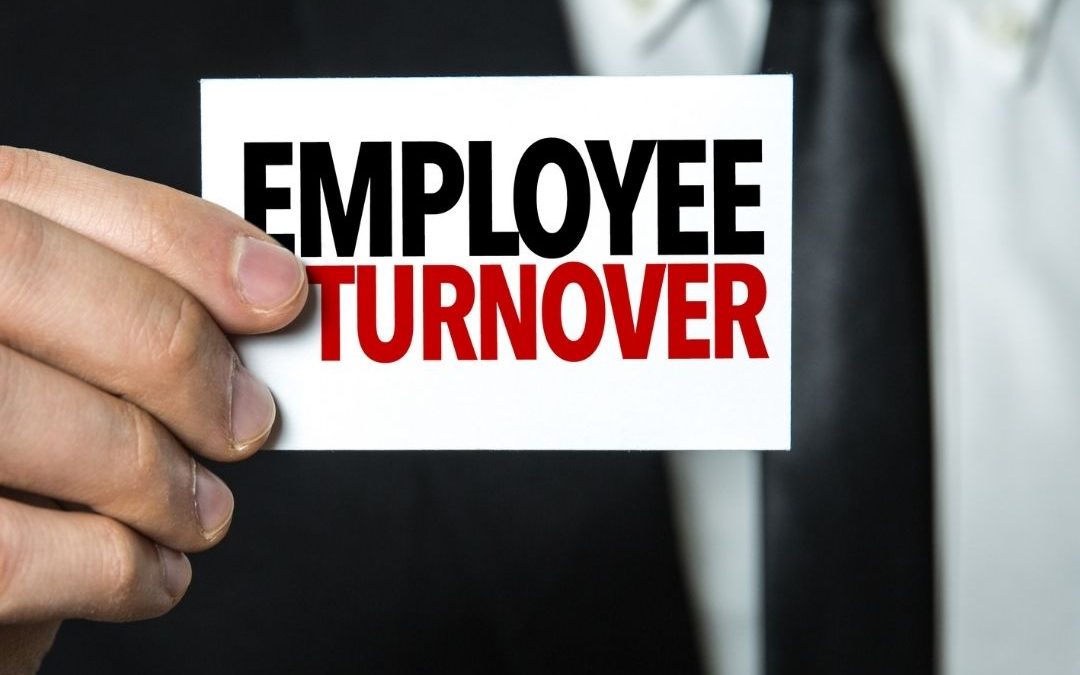- Have a question?
- 613-89-Prime (77463)
- 1-866-950-3667
- info@primebenefitsgroup.com
Increasing Turnover Rates – Why Now and Six Key Tips


Man in a suit holding a sign that reads "Employee Turnover"
As we emerge from the pandemic and face ‘the new normal’, many employees are resisting returning to the office, saying they would rather quit, and many employers are struggling to find top talent. This is not what experts would have predicted during a time when prices are increasing due to inflation and many jobs are available to help pay for these increasing costs. But the statistics tell us that voluntary turnover has hit a 7-year high. In fact, it is expected that more than half of employees in North America will soon look for a new job. Turnover has increased in all industries, for all types of positions, and at every level of organization.
The Great Resignation
Experts have labeled it ‘turnover tsunami’ and ‘The Great Resignation’, both terms implying doomsday-like consequences associated with these current turnover rates. Certainly, if a company lost a top performer, this could indefinitely affect productivity and the company’s future. But when any employee leaves it is costly – estimated at $16,500 replacement cost for an employee earning $50,000/year. These costs arise from taking time to deal with the departure, having to recruit, interview, hire, onboard, and train someone new. Meanwhile, the company has lost valuable expertise and knowledge, there is a loss in productivity, and customer satisfaction has likely suffered. The employees who are left behind feel less loyalty and lowered morale, and they suffer more burnout with a new, increased workload. Finally, it destroys employer branding when the word gets out that turnover at Company X is high.
Why the Increase in Turnover Rates?
What is the reason for the current increase in turnover rates? Cynics thought it had to do with government benefits that were offered during the pandemic, but the labour force was unaffected when those ran out. Other practical reasons have been proposed for the flood of turnover we’re now seeing, such as: wanting better work-life balance and flexibility, health and/or family reasons, no career development, wanting better wages and benefits, seeking better working conditions that includes a lighter workload, feeling disconnected with the company and its culture, poor leadership with lack of communication and direction, and lack of recognition.
Others have looked deeper than this and thought, why now? Why after living at home with family for 2 years during a pandemic, are so many quitting? And another label is born: The ‘pandemic epiphany’, or the change in our attitudes toward work and how we value our time. Perhaps working from home created a new distribution of work-life balance that woke us to the realization that there is more to life than work, that we are not defined by our work, and that our family and health are the most important thing. With this awakening, anyone with a bit of savings opted to leave a mediocre job, and the tight labour market only made it easier.
Tips for Addessing Employee Turnover
Is there anything that employers can do to increase employee retention and decrease turnover? Yes! Estimates indicate that up to 75% of the reasons for an employee leaving were preventable. Here are 6 tips for employers to deal with increased turnover:
- Create an employee retention strategy – make efforts to keep the employees you already have. Some say treat your employees like customers by finding out what they want and acting on it (as much as possible) with respect to engagement, culture, onboarding, wages, benefits, recognition, career development, flexibility, and workload.
- Collect measures relevant to turnover – not just for your company, but your industry. By collecting data on more than just turnover rates (for example, voluntary quits, absenteeism, promotions, tenure, and so on), it may be possible to identify employees who are at high risk of leaving.
- Communicate with employees – and this is a two-way street. It means employers should (a) listen to employees and ask them what they want, and (b) be upfront with employees about decisions affecting post-pandemic work.
- Create a culture of cross-training and info-sharing – make sure all employees document their work processes and any specifics that they have to do their job, such as passwords or how new orders are marketed. It isn’t wise to depend on only one person for anything work-related.
- Make it okay to quit – realize that it benefits both the employer and employee if they’re not doing their best work at your company. It also benefits everyone if the employee leaves on good terms, including the employees who stay.
- Quitting isn’t necessarily a bad thing – would it be better for workers to cling to a job that they don’t want? No way. Change perspectives to view quitting as an opportunity to recruit fresh talent and do some reorganizing.
We’re Here to Help
We realize that increased turnover is a concern for all leaders. Know that we’re here to work with you and create solutions that work best for you and your organization. Please contact us at info@primebenefitsgroup.com.